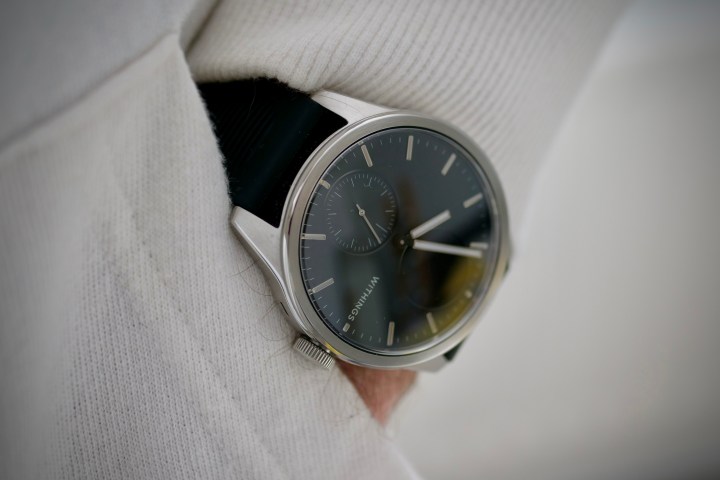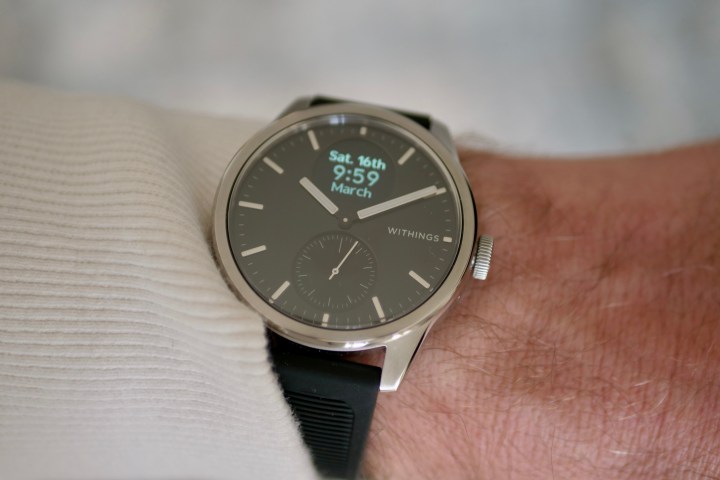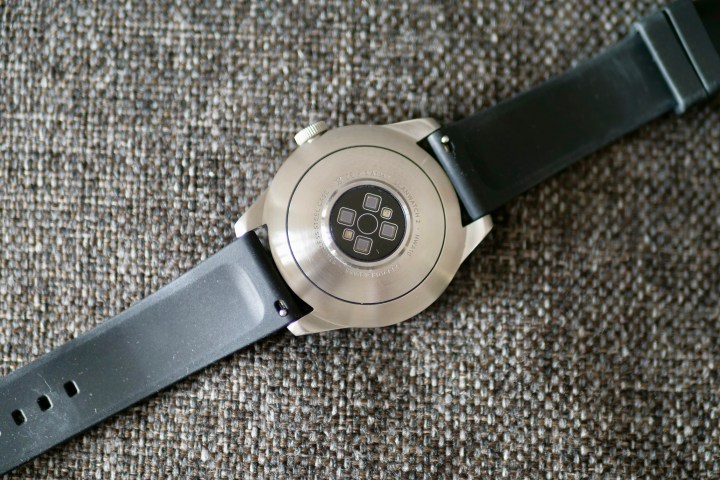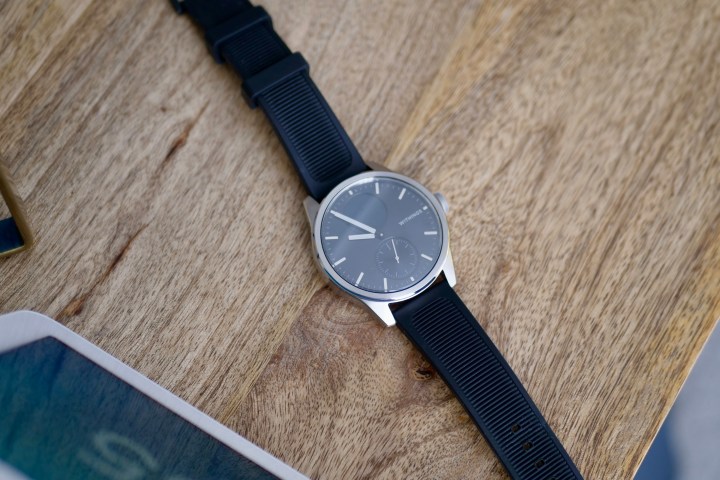
I recently put the Withings ScanWatch 2 back on my wrist, and within a few hours, I wanted to take it off again.
When I first reviewed the ScanWatch 2, I didn’t have a problem with the supplied strap. But this time, it annoyed me so much that I almost abandoned the smartwatch entirely. I solved the issue in a slightly unusual way, only to discover some other issues that made me think a different wearable was the better purchase.
Changing the strap

When I first used the ScanWatch 2, I don’t remember having any problem with the strap at all. I barely mention it in the review itself, confirming how inconsequential it was at the time. The problem with the ScanWatch 2’s strap this time was the fit. It’s a long strap, and I either have to use the last available hole — which makes it too tight — or the second-to-last hole, where it is too loose and uncomfortably works its way around my wrist.
Why didn’t I notice it before? Perhaps it was the change in ambient temperature due to it being a different time of year, or perhaps I’m more easily irritated by little things in 2024. Either way, it had to go. The Withings ScanWatch 2 has a 20mm strap attached, and as it comes with quick-release pins, it’s really easy to remove. The question was, what should be the replacement? I have a collection of watch straps, but none of them matched the small lug width on the ScanWatch 2.

Amazon is awash with 20mm straps, but I didn’t want to buy one and have it be equally uncomfortable. Further, Withings’ own options are quite expensive. I looked through my own watch and smartwatch collection instead and came across an old, now unused Emporio Armani smartwatch with a perfect black rubber 20mm strap. Seconds later, it was attached to the Withings ScanWatch 2, and it transformed the comfort — so much so that I wish I’d done it before.
What is there to learn here? Change the strap on your smartwatch (or your normal watch), as it can make a massive difference to how it feels to wear every day. Just because it was comfortable at one point doesn’t mean it will be that way forever.
What about the rest of the watch?

Now that I have an unofficial Withings x Emporio Armani ScanWatch 2 on my wrist, how has it been to use again? It’s a very low-maintenance smartwatch. It shows notifications and movement reminders, but it’s easy to silence them, allowing it to fade into the background. While I appreciate the lack of interruptions, this is a problem for the ScanWatch 2.
Unfortunately it’s just not a very exciting watch. The design is very good, but it doesn’t really make a statement despite the high-quality materials and build. There’s a fine line between a smartwatch making itself known too much, and being a completely silent partner, and the ScanWatch 2 is silent to the point of being comatose if you’re not careful with the settings.
The minimalist, classic design and lack of apps and a touchscreen are appealing, and are undoubtably a reason why some people will consider the ScanWatch 2 the only smartwatch they’d ever wear. But if I’m going to make the effort to wear a smartwatch, then I want to notice the benefits, otherwise what’s the point? Worse, the ScanWatch 2’s seeming indifference to its position on my wrist sadly extends into the app.
Pay up or shut up

The Withings app shows the data collected by the ScanWatch 2, including steps, body temperature, average heart rate, sleep, and more. However, it doesn’t tell you anything about it and doesn’t combine all the different data points to give you an overview of your health, at least not in a cohesive and simple way. That is, unless you pay.
That’s right, Withings+ is a subscription service that unlocks your health improvement score, insights into your health, trend reports, and ways to improve. It also provides access to workout plans, articles, and recipes. It costs $10 per month or $100 per year. What’s more, the app includes data points that are unlocked by buying other Withings products, such as its smart scale, which makes the already quite hard-to-fathom layout even less helpful at a glance. The app seems to go out of its way to make it clear you should be paying to get the most out of the smartwatch and the data it collects.
Revisiting the Withings ScanWatch 2 has left me a little disappointed.
A greater concern is the level of accuracy of the watch’s sensors. On multiple nights, the watch has failed to properly recognize sleep and would count some of it as a nap and the rest as true sleep, then give me a very poor Sleep Score in the morning. The data recorded during the day appears to be representative of my activity, and the heart rate matches results from other devices. But when you know some results are wrong, it does cast doubt over the others.
The Oura Ring may be the better choice

Revisiting the Withings ScanWatch 2 has left me a little disappointed. It’s very well-made, and I know a lot of people love the classic look. However, the app, data presentation, and accuracy fall behind the competition. Using it made me feel like I need to pay for Withings+ to get much from it, but little about the free experience encourages me to do so.
When I considered all this, I wondered why I would use it long-term instead of another design-led, no-touchscreen health and activity tracker: the Oura Ring. Oura charges $6 per month for its app, which you need to pay as it’s useless without it, and the smart ring itself costs about the same as the ScanWatch 2. It’s entirely silent on my finger, but the app presents its data in a clear, logical, and interesting way.

Unless you are sold on the Food and Drug Administration (FDA)-approved atrial fibrillation detection that’s part of the ScanWatch 2, take a close look at the Oura Ring before making any final buying decision. You may find it’s the better choice.
I check the Oura app each day and trust the information it shows, but I rarely felt the same about the ScanWatch 2 and its app. This is really important, as if you don’t wear an activity tracker or check the app regularly, what’s the point in owning it?
Editors’ Recommendations
Services Marketplace – Listings, Bookings & Reviews
